
Candida Martinelli's Italophile Site

Main
Page This family-friendly site celebrates Italian culture for the enjoyment of children and
adults. Site-Overview
Some of the most impressive images of Vesuvius erupting are photographs from it's
last eruption in 1944. The U.S. military had retaken the area
from the Nazi's, so the military photographers were on hand to
photograph the event. The lava flows were slow-moving, so
few
lives were lost, but homes and villages were destroyed.
Many images of Vesuvius's eruption in 1944 Although Mount Vesuvius erupts regularly in geological terms, it's the
eruption in
the year 79 that fascinates people the most. That's because
the time-capsule-like remains of the Roman towns of Pompeii and
Herculaneum, both devastated by the 79 eruption, have been
attracting visitors since their discovery in 1738 (Herculaneum)
and 1748 (Pompeii). And historians relive the year 79 eruption by reading a detailed
account of of the 19 hour eruption of ash, rock and pyroclastic
flows that the Roman politician and early naturalist Pliny the
Younger recorded. An artist made this evocative depiction of the eruption, with the
Roman town awaiting it's doom from the approaching lava flows. This actual photograph from today shows how close the artist got
to what probably took place in 79 A.D. Pliny's uncle, Pliny the Elder, went by ship to get a closer view
of the eruption, and to assist in the rescue of survivors from the
shore. But he never returned. He died while sheltering on
shore from the rain of stones and ash, perhaps from a stroke or
heart attack. Over the years, the year 79 eruption has captured the imaginations of scientists, artists
and the public alike. Tourists to Italy have always
made Pompeii a must-see stop on their tours. I report below an abridged account by the writer William Dean
Howells of his return visit in 1908 to Pompeii after a first visit
in 1864 on his honeymoon. He gives a very good impression of
what Pompeii, and Italy, was like back then. He also
quotes from an Italian guide book of the period, translated into
dubious English. Pompeii and Herculaneum together had populations of perhaps
25,000. It's believed that at least 1500 people died in the
towns from the 79 eruption, but the number may well be greater.
The earthquakes that preceded the eruption, and the long eruption
process gave most people plenty of time to leave before the fatal
flows arrives at the towns. Pompeii is unique because it's a Roman town that has not been
altered since the Roman period. Other Roman towns have
continued to be lived in, and changed over the years. In Pompeii we can see things that help us imagine, as the art
below shows, just how things looked back in the year 79. The major roads with shops lining them, and homes above the
shops, and the major market area. The forum, auditoriums, and police/soldier barracks. Public and private baths. Shops, restaurants, hotels, modest homes, vacation villas. Schools, graffiti, advertising slogans, beware-of-dog signs, and
their love of their pets, things that make the people of the ancient
Roman empire seem human. And we can see lots of evidence of pagan worship combined with
the Mediterranean wide phallic worship. This phallic worship can still be seen today throughout the
Mediterranean region in the
phallic statues readily available at tourist centers, and in the attachment to representations of bull's
horns on chains around young men's necks. Pompeian home decor, as it was uncovered, influence European home
decor. Books were compiled of Pompeian designs for homeowners
to copy, some of which appear reproduced on this page.
Pompeian fashions influenced modern fashions. Jewelry and hair styles were copied. Gardens and villas were emulated. It's hard to overplay the influence of the discovery of Pompeii
on the arts of Europe, and in the minds of Europeans, but it
requires a study of it's own, and this page is just an introduction
to the subject. If you want to read more on the web about Pompeii, the Wikipedia
article on Pompeii
contains a lot of information and many links to interesting Pompeii
sites. And this is the
official website for the archeological site. But I highly recommend a site set up by the
Cole Family
who lived near Pompeii for work, and took an especial interest
in it. Their site is wonderfully informative, illustrated, and
interesting, and from a refreshingly Christian perspective on that
pagan period, adding greater understanding of life in Pompeii. Below you can
find some books about Pompeii from
Amazon.com. The BBC recently produced a television film about Pompeii, and
made
this site to accompany it. Here are some Pompeii DVDs.
Here following are images from 1890 of Pompeii. And after the images, you'll find an account by a tourist from
that same time period, the journalist and novelist William Dean
Howells.
This colorchrome image is from 1890 showing how
the House of Vetti Peristyle looked at that time, about the time of
the account below by William Dean Howells.
Tour guides would take people up to the crater of the volcano.
These extraordinary images come from the
Old Picture site. It
is a wonderful place to browse the past. If you are an
educator, it is a fantastic resource for lessons, bringing the past
to life in a way mere words or paintings cannot. This is the
link to
their Italy category, and this
link is to their home page. The country
through which we made the hour's run [ed. by train] was sympathetically squalid. We
had, to be sure, the sea on one side, and that was clean enough; but
the day was gray, and the sea was responsively gray; while the earth
on the other side was torn and ragged, with people digging manure
into the patches of broccoli, and gardening away as if it had been
April instead of January. There were shabby villas, with stone-pines
and cypresses herding about the houses, and tatters of life-plant
overhanging their shabby walls; there were stucco shanties which the
men and women working in the fields would lurk in at nightfall. At
places there was some cheerful boat building, and at one place there
was a large macaroni manufactory, with far stretches of the product
dangling in hanks and skeins from rows of trellises. We passed
through towns where women and children swarmed, working at doorways
and playing in the dim, cold streets; from the balconies everywhere
winter melons hung in nets, dozens and scores of them, such as you
can the Italian fruiterers' in New York, and will keep buying
when once you know how good they are. In Naples they sell them by
the slice in the street, the fruiterer carrying a board on his head
with the slices arranged in an upright coronal like the rich,
barbaric head-dress of some savage prince. Our train was
slow and our car was foul, but nothing could keep us from arriving
at Pompeii in very good spirits. The entrance to the dead city is
gardened about with a cemeterial prettiness of evergreens; but,
after you have bought your ticket and been assigned your guide, you
pass through this decorative zone and find yourself in the first of
streets where the past makes no such terms with the present. Most of the
places I re-entered through my recollection of them, but to this
subjective experience there was added that of seeing much newer and
vaster things than I remembered. That sad population of the victims
of the disaster, restored to the semblance of life, or perhaps
rather of death, in plaster casts taken from the moulds their decay
had left in the hardening ashes, had much increased in the
melancholy museum where one visits them the first thing within the
city gates. The identity of each of the public
edifices is easily attested to the archaeologist, but the generally
intelligent, as the generally unintelligent, visitor must take the
archaeologist's word for the fact. One temple is much like another
in its stumps of columns and vague foundations and broken altars.
Among the later discoveries certain of the public baths are in the
best repair, both structurally and decoratively, and in these one
could replace the antique life with the least wear and tear of the
imagination. I could not
tell which the several private houses were; but the guide-books can,
and there I leave the specific knowledge of them; their names would
say nothing to the reader if they said nothing to me. In Pompeii,
where all the houses were rather small, some of the new ones were
rather large, though not larger than a few of the older ones. Not
more recognizably than these, they had been devoted to the varied
uses known to advanced civilization in all ages: there were
dwellings, and taverns and drinking-houses and eating-houses. The pictures
on the walls of the newly excavated houses are not strikingly better
than those I had not forgotten; but of late it has been the purpose
to leave as many of the ornaments and utensils in position as
possible. The best are, as they ought to be, gathered into the
National Museum at Naples, but those which remain impart a more
living sense of the past than such wisely ordered accumulations; for
it is the Pompeian paradox that in the image of death it can best
recall life. There is no Elevated or
Subway at Pompeii, and even the lines of public chariots, if such
they were, which left those ruts in the lava pavements seem to have
been permanently suspended after the final destruction in the year
79. We were not
only very tired, but very hungry, and we asked our guide to take us
back the shortest way. He acted upon it instantly, and we cut across the back
yards and over the kitchen areas of several absent citizens on our
way back. Our guide was as good and true as it is in the nature of
guides to be, but absolute goodness and truth are rather the
attributes of American travellers; and you will not escape the small
graft which the guides are so rigorously forbidden to practise.
Pompeii is no longer in the keeping of the Italian army; with the
Italian instinct of decentralization the place has claimed the right
of self-government, and now the guides are civilians, and not
soldiers, as they were in my far day. They do not accept fees, but
still they take them. Our guide said that he had a
brother-in-law who had the best restaurant outside the gate, where
we could get luncheon for two francs. As soon as we were in the
hands of the runner for that restaurant the price augmented itself
to two francs and a half; when we mounted to the threshold, lured on
by the fascinating mystery of this increase, it became three francs,
without wine. But as the waiter justly noted, in hovering about us
with the cutlery and napery while he laid the table, a two-fifty
luncheon was unworthy such lords as we. When he began to bring on
the delicious omelette, the admirable fish, the excellent cutlets,
he made us observe that if we paid three francs we ought to eat a
great deal; and there seemed reason in this; at any rate, we did so.
The truth is, that luncheon was worth the money, and more; as for
the Vesuvian wine, it had the rich red blood of the volcano in it,
and it could not be bought in New York for half a franc the bottle,
if at all; at thrice that sum in Naples it was not a third as good. Afterward in the
National Museum at Naples, where most of the precious Pompeian
things, new and old, are heaped up, they still make but a poor show
there beside the treasures of Herculaneum, where the excavation of a
few streets and houses has yielded costlier and lovelier things than
all the lengths and breadths of Pompeii. But not for this would I
turn against Pompeii at the last moment, as it were, though my
second visit had not aesthetically enriched me beyond my first.
I
keep the vision of it under that gray January sky, with Vesuvius
smokeless in the background, and the plan of the dead city, opener
to the eye than ever it could have been in life, inscribed upon the
broadly opened area of the gentle slopes within its gates. Whether
one had not better known it dead than alive, one might not wish
perhaps to say; but the place itself is curiously without pathos;
Newport in ruins might not be touching; possibly all skeletons or
even mummies are without pathos; and Pompeii is a skeleton, or at
the most a mummy, of the past. Seeing what
antiquity so largely was, however, one might be not only resigned
but cheerful in the effacement of any particular piece of it; and
for a help to this at Pompeii I may advise the reader to take with
him a certain little guide-book, written in English by a very
courageous Italian, which I chanced to find in Naples. Though it
treats of the tragical facts with seriousness, it is not with equal
gravity that one reads that sixteen years before the Vesuvian
eruption "the region had been shaken by strong sismic movements,
which induced Pompei inhabitants to forsake precipitately their
habitations. But being the amazement up, they got one's home again
as soon as the earth was quiet and all fear and sadness went off by
memory." Signs of the final disaster to follow were not wanting; the
wells failed, the water-courses were crossed by currents of carbonic
acid; "the domestic animals were also very sensible of the
approaching of the scourge; they lost the habitual vivacity, and
having the food in disgust, had from time to time to complain with
mournful wailings, without justified reasons. . . . The sky became
of a thick darkness, . . . interrupted only by flashes of light
which the lava riverberated, by the bloody gliding of the
thunderbolts, by the incandescence of enormous projectiles, thrown
to an incommensurable highness. . . . Death surprised the charming
town; houses and streets became the tombs of the unhappies hit by an
atrocious torture." The author's
study of the life of Pompeii is notable for diction which, if there
were logic in language, would be admirable English, for while yet in
his mind it must have been "very choice Italian." He tells us that "Pompei's
dwellings are surprising by their specific littleness," and explains
that "Pompei inhabitants, for the habitudes of the climate could
allow, lived almost always to the open sky," just as the Naples
inhabitants do now. "They got home only to rest a little, to fulfill
life wants, to be protected by bad weather. They spent much time
during the day in forum, temples, thermes, tennis-court, or
intervened to public sports, religious functions and meetings. . . .
Few houses only had windows. The sunlight and ventilation to the
ancients was given through empty spaces in the roofs. . . . Hoofs
knocked under the weight of materials thrown out by Vesuvius; it is
undoubted, however, that roofs were provided with covers or
supported terraces. In the middle of the roofs was cut an ouerture
through which air and light brought their benefits to the underlaid
ambients. . . . Proprietor disposed the locals according to his own
delight. . . . So that, there were bed, bath, dining, talking and
game rooms." In the peristyle "the ground was gardened, the area
shared in flower beds, had narrow paths; herbs, flowers, shrubs were
put with art well in order on flower beds, delighted from time to
time by statues of various subjects," as may be noted in the actual
restorations of some of the Pompeian houses. As for their
spiritual life, "Pompeian's religion, like by Roman people, was the
Paganism. Deities were worshipped in the temples with prayers,
sagrifices, vows, and festivities. . . . Banquets to the Deity were
joined to prayers. In fact, dining tables were dressed near the
altars, and all around them on dining beds, tricli-nari,
placed Divinities statues as these were assembled to own account to
the joyous banquest." Auspices or auguries "gave interpretation to
thunders, lightnings, winds, rain crashes, comets, or to bird songs
and flights. . . . Horuspices inquired the divine will on the animal
bowels, sacrificed to the altar; they took out further indications
by fleshes and bowels flames when burnt on the altar." An important
feature of Pompeian social life was the bath, which "was one of the
hospitality duty, and very often required in several religious
functions. . . . Large and colossal edifices were quite furnished
with all the necessary for care and sport. Besides localities for
all kind of bath--cold, warm, steam bath--didn't want parks, alleys,
and porticos in order to walk; lists rings for gymnastic exercises,
conversation and reading rooms, localities for theatrical
representations, swimming stations, localities for scientific
disquisitions, moral and religious teachings. The most splendid art
works adorned the ambient." When we pass
to the popular amusements we are presented with the materials of
pictures vividly realized in The Last Days of Pompeii [ed.
the opera], but
somewhat faded since. "In the beginning gladiators' rank was made by
condemned to death slaves and war prisoners. Later also thoughtless
young men, who had never learned an advantageous trade, became
gladiators." In the arena they engaged in sham fights till the
spectators demanded blood. Then, "sometimes one provided one's self
nets for wrapping up the adversary, who, hit by a trident much,
frequently die. When the gladiator was deadly wounded, forsaking the
arm, struck down and stretching the index, asked the people grace of
life. The spectators decided up his destiny, turning the thumb to
the breast, or toward the ground. The thumb turned toward the ground
was the unlucky's death doom, and he had without fail the throat cut
off." Such, dimly
but unmistakably seen through our Italian author's well-reasoned
English, were the ancient Pompeians; and, upon the whole, the
visitor to their city could not wish them back in it. I preferred
even those modern Pompeians who followed us so molestively to the
train with bargains in postal-cards and coral. They are very alert,
the modern Pompeians, to catch the note of national character, and I
saw one of them pursuing an elderly American with a spread of
hat-pins, primarily two francs each, and with the appeal, evidently
studied from some fair American girl: "Buy it, Poppa! Six for one
franc. Oh, Poppa, buy it!"
This link
is to an Italian company that makes reproduction Pompeian jewelry,
authorized by Italian museums.
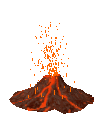
Vesuvius
and Pompeii
![]()
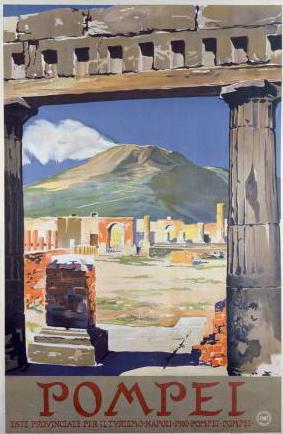
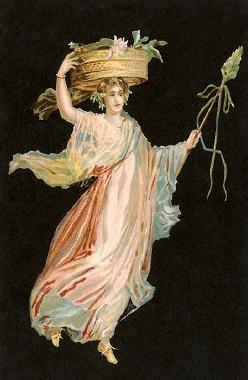
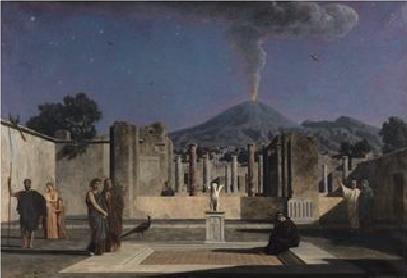
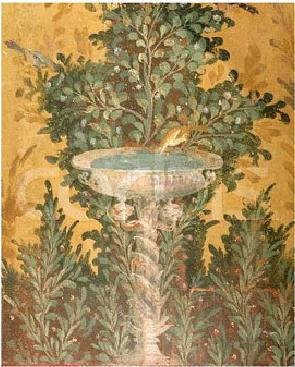
![]()
Roman Fresco from the Oplonti Villa in Pompeii Depicting a Birdbath

![]()
Roman Fresco from the Oplonti Villa in Pompeii Depicting a Flying Bird
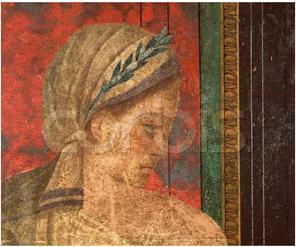
![]()
Detail of a Woman from the Fresco Cycle at the Villa of the Mysteries

![]()
Detail of a Woman and a Boy from the Fresco Cycle at the Villa of the Mysteries
Mount Vesuvius, mainland Europe's most active volcano, can be
seen from Naples, Italy, and is a favorite subject of artists,
tourists, and especially naturalists who visit Vesuvius today, but
even more often in the 1800s to observe her then frequent eruptions.


Pompeii and
Vesuvius Circa 1890 - 1900
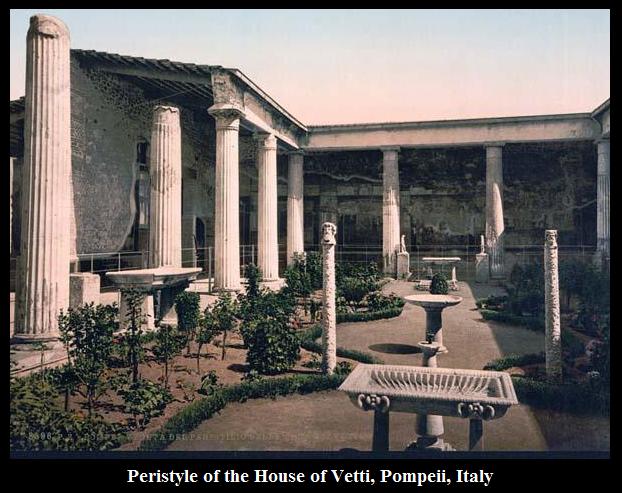
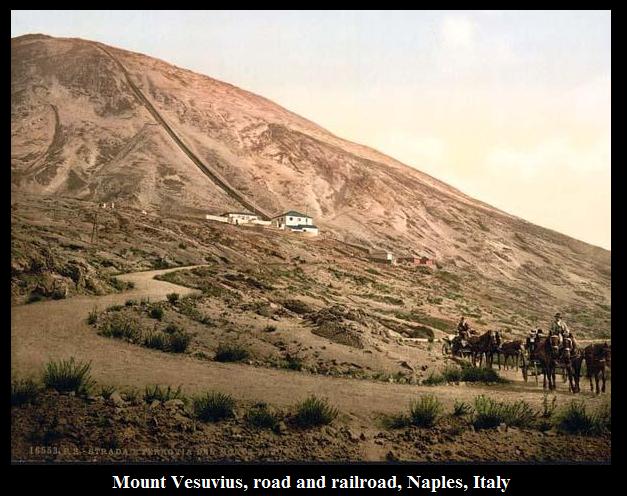
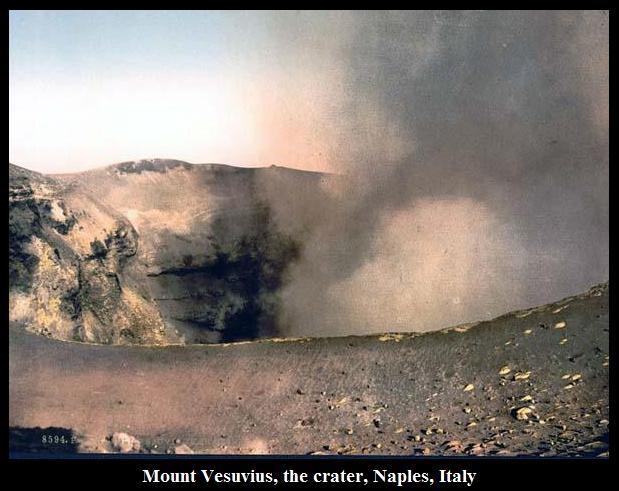
POMPEII REVISITED
(abridged from Roman Holidays by the
writer William
Dean Howells, 1908, who had previously visited the site in 1865)
Some Amazon.com Books about Pompeii